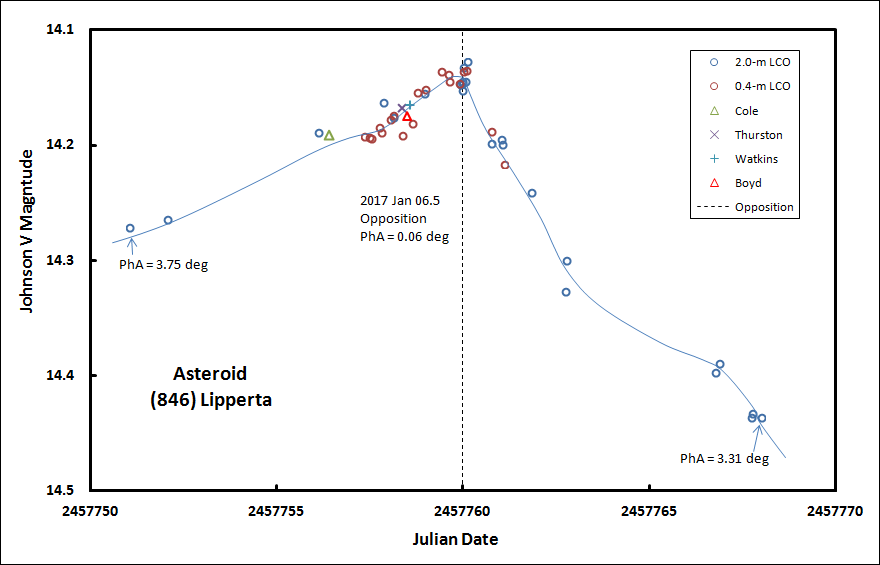
Dear Observer,
The Moon is now moving away from this target asteroid so am hoping that
those equipped with a Johnson V filter will be able to resume observations.
I still have some work to do on contributions from people but the initial
indications are that a V filter is needed to achieve absolute photometry
good to 0.01 mag or better accuracy. A Clear or Luminance filter does not
appear to cut the mustard. Sorry to those who don't have access to the right
type of filter.
Attached is the lightcurve so far. The span of 17 days equates to just 25%
of its rotation and during this interval all that seems to have happened is
that the object has faded by about 0.14 magnitudes, i.e. it probably has
gone from maximum light to near minimum light given its ultra-slow rotation
rate. The amplitude of the lightcurve is probably about 0.15 mag - yet to be
confirmed. The Opposition Surge looks to be quite weak - about 0.05 mag or
less. When more data are in I'll plot the Reduced Magnitude taking account
of the change in Delta and Heliocentric Distance and it should then be more
obvious. However, the final analysis will require our covering a second
rotation of the asteroid so we know what the composite lightcurve looks like
after having subtracted the likely phase curve. Not easy.
This asteroid is really quite bizarre. It is a member of the Themis family.
The low degree of opposition brightening fits in with BAA observations of 4
other Themis-family asteroids but differ from that of (24) Themis itself,
which despite a relatively low albedo exhibits an opposition surge of almost
0.20 magnitude. My hypothesis is that the excess amount of light close to
zero phase angle is contributed by a water ice related feature distributed
at the surface. The layer will be patchy and may be only a few molecules in
thickness, strongly bound to fine pores in the surface regolith.
Grateful if observations can be obtained whenever clear sky conditions
prevail. It is very early days in coverage terms as yet.
Good luck,
Richard
2017 January 14
